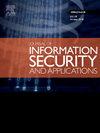用户不遵守软件更新行为的安全含义:风险评估研究
IF 3.8
2区 计算机科学
Q2 COMPUTER SCIENCE, INFORMATION SYSTEMS
Journal of Information Security and Applications
Pub Date : 2025-07-11
DOI:10.1016/j.jisa.2025.104152
引用次数: 0
摘要
软件更新对于增强安全性、修复错误和向现有软件添加更好的特性至关重要。虽然一些用户接受软件更新,但不合规仍然是一个普遍的问题。当没有安装安全更新或延迟安装安全更新时,最终用户的系统仍然容易受到安全威胁。尽管进行了研究,但用户不遵守软件更新的行为仍然很普遍。在本研究中,我们探讨了心理因素如何影响用户对软件更新的感知和行为。此外,我们还调查了有关潜在漏洞和风险评分的信息如何影响他们的行为。接下来,我们提出了一个模型,该模型利用国家漏洞数据库(NVD)的属性来有效评估与延迟软件更新相关的总体风险评分。接下来,我们对Windows操作系统用户进行了一项用户研究,结果显示,提供不更新系统的风险评分和有关漏洞的信息,显著提高了用户更新系统的意愿。此外,我们还研究了人口统计因素,性别,对用户关于软件更新的决策的影响。我们的结果显示,在关注系统安全方面,男性和女性用户的反应没有统计学上的显著差异。本研究的意义是相关的软件开发商和制造商,因为他们可以使用这些信息来设计更有效的软件更新通知消息。潜在风险及其对应的风险评分的沟通可以激励用户采取行动,及时更新系统,最终提高系统的整体安全性。本文章由计算机程序翻译,如有差异,请以英文原文为准。
Security implications of user non-compliance behavior to software updates: A risk assessment study
Software updates are essential to enhance security, fix bugs, and add better features to the existing software. While some users accept software updates, non-compliance remains a widespread issue. End users’ systems remain vulnerable to security threats when security updates are not installed or are installed with a delay. Despite research efforts, users’ noncompliance behavior with software updates is still prevalent. In this study, we explored how psychological factors influence users’ perception and behavior toward software updates. In addition, we investigated how information about potential vulnerabilities and risk scores influence their behavior. Next, we proposed a model that utilizes attributes from the National Vulnerability Database (NVD) to effectively assess the overall risk score associated with delaying software updates. Next, we conducted a user study with Windows OS users, showing that providing a risk score for not updating their systems and information about vulnerabilities significantly increased users’ willingness to update their systems. Additionally, we examined the influence of demographic factor, gender, on users’ decision-making regarding software updates. Our results show no statistically significant difference in male and female users’ responses in terms of concerns about securing their system. The implications of this study are relevant for software developers and manufacturers as they can use this information to design more effective software update notification messages. The communication of the potential risks and their corresponding risk scores may motivate users to take action and update their systems in a timely manner, which can ultimately improve the overall security of the system.
求助全文
通过发布文献求助,成功后即可免费获取论文全文。
去求助
来源期刊

Journal of Information Security and Applications
Computer Science-Computer Networks and Communications
CiteScore
10.90
自引率
5.40%
发文量
206
审稿时长
56 days
期刊介绍:
Journal of Information Security and Applications (JISA) focuses on the original research and practice-driven applications with relevance to information security and applications. JISA provides a common linkage between a vibrant scientific and research community and industry professionals by offering a clear view on modern problems and challenges in information security, as well as identifying promising scientific and "best-practice" solutions. JISA issues offer a balance between original research work and innovative industrial approaches by internationally renowned information security experts and researchers.
 求助内容:
求助内容: 应助结果提醒方式:
应助结果提醒方式:


